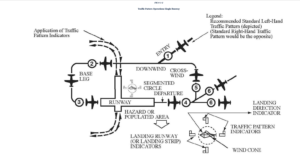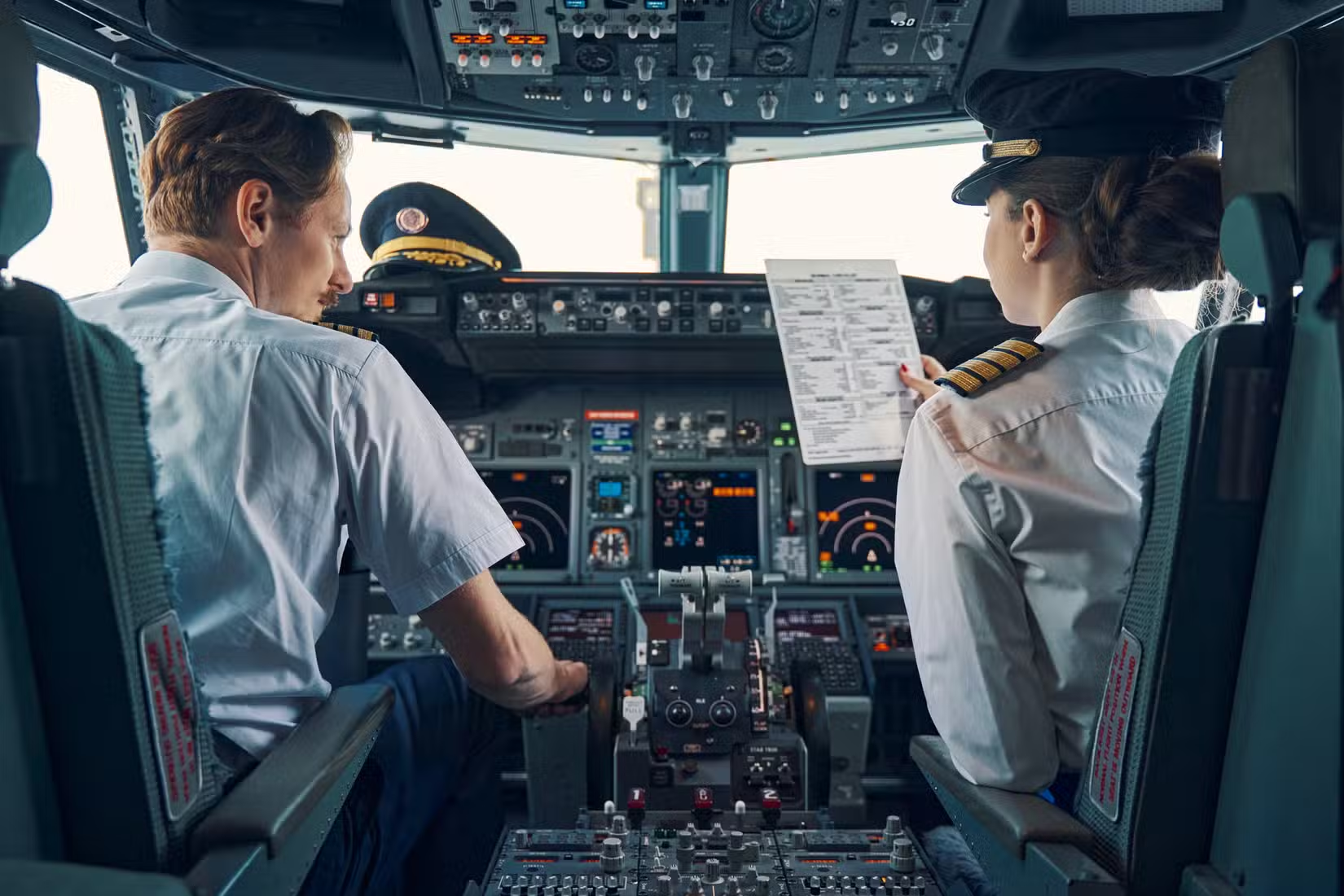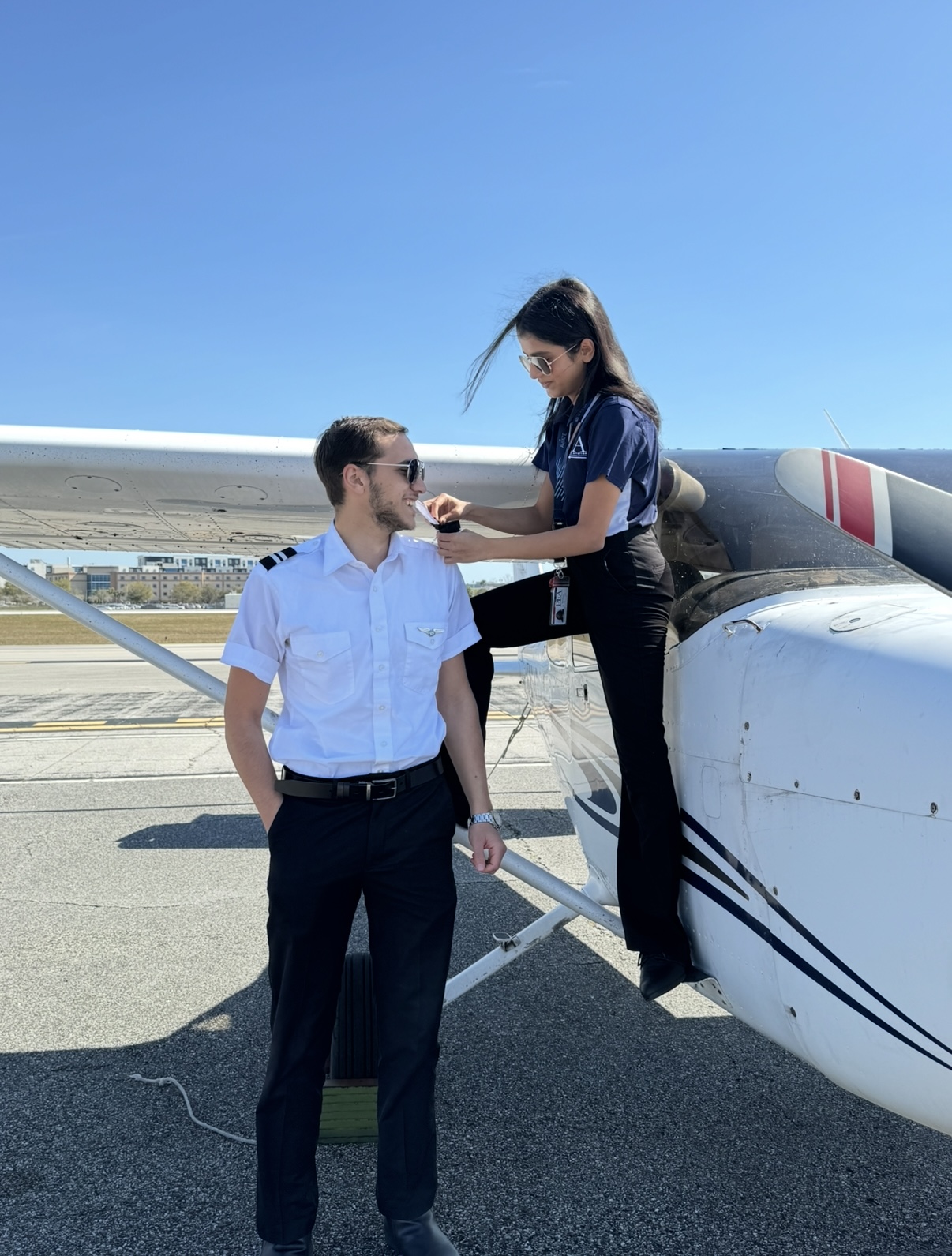The Airport Traffic Pattern
Airport traffic patterns play a crucial role in ensuring the safe and efficient movement of aircraft into and out of airports. Just as roads and streets are vital for the operation of cars and other automobiles, airports and/or airstrips are essential for the smooth operation of airplanes. Pilots must learn and understand proper air traffic rules, procedures, and traffic pattern layouts used at various airports. Pilots must adhere to these established patterns and rules to maintain order, prevent hazardous events, and enhance the overall safety of air travel. While one might assume that student pilots spend a significant amount of their time flying in circular patterns, the reality is that they primarily navigate rectangular routes (with occasional circular maneuvers). This practice is implemented because at smaller airports, pilots utilize a rectangular traffic pattern to ensure the same orderly and systematic flow of air traffic.
An airport traffic pattern encompasses the designated direction and altitude that needs to be maintained by pilots, as well as the procedures for entering and exiting the pattern. Unless the airport has approved visual markings indicating that right turns should be made, pilots must execute all turns within the traffic pattern to the left. This is to ensure order, predictability, and safety of the air traffic around the airport.
 While airport traffic patterns generally follow a standardized format in terms of altitudes, speeds, and entry/exit procedures for aircraft, there can be some variations to accommodate local procedures, terrain avoidance, or noise abatement measures in certain areas. However, even with such exceptions, the overall structure and principles of traffic patterns at airports are consistent in maintaining safety in the airspace. Let’s take a look at the 6 legs a standard traffic pattern has.
While airport traffic patterns generally follow a standardized format in terms of altitudes, speeds, and entry/exit procedures for aircraft, there can be some variations to accommodate local procedures, terrain avoidance, or noise abatement measures in certain areas. However, even with such exceptions, the overall structure and principles of traffic patterns at airports are consistent in maintaining safety in the airspace. Let’s take a look at the 6 legs a standard traffic pattern has.
- Departure
- Crosswind
- Downwind
- Base
- Final Approach
- Upwind
Departure
The departure leg establishes the initial trajectory for the aircraft after takeoff, setting the stage for the succeeding phases of a traffic pattern. This leg is a straight-line course aligned with and extending from the takeoff runway. It begins at the point where the aircraft becomes airborne and continues until the pilot initiates a 90-degree turn onto the crosswind leg.
Crosswind
The crosswind leg represents the segment of the rectangular traffic pattern that runs perpendicular to the extended centerline of the takeoff runway. The pilot should execute an approximately 90-degree turn from the upwind leg, to transition onto the crosswind leg. This positioning establishes a lateral course that is horizontally perpendicular to the runway’s extended centerline, allowing the pilot to maintain proper spacing and alignment within the designated traffic pattern.
Downwind
This is a critical phase that demands a pilot’s full attention and proficiency. This leg is flown parallel to the landing runway, but in the opposite direction of the intended landing path. A pilot must:
- maintain a distance of approximately ½ to 1 mile from the landing runway while adhering to the specified traffic pattern altitude.
- Complete all pre-landing checks, extend the landing gear if the aircraft is equipped with retractable landing gear, and remain parallel to the approach end of the landing runway.
- Reduce power and begin a descent while also considering tailwinds to have enough altitude to continue the descent on the base leg.
Base Leg
This is the transitional part of the traffic pattern between the downwind and final approach leg. Taking into account the wind conditions, the pilot should position the aircraft on the base leg at an appropriate distance from the approach end of the landing runway. This distance should allow for a controlled and gradual descent, enabling the pilot to reach the intended touchdown point smoothly and safely.
Final Approach
This leg is the most important and demands the most precision from the pilot. During the final approach, the pilot’s primary focus is on executing a safe and stable approach. If there is traffic occupying the runway, the pilot must ensure sufficient time for that traffic to exit or more before proceeding. In the event of a potential conflict, an early go-around may be warranted. The pilot can communicate this with the air traffic controller (ATC). The final approach allows for verification of the correct landing area, ensuring that the aircraft is lined up with the intended runway.
Upwind Leg
This leg involves flying a course parallel to the landing runway, in the same direction as the incoming landing traffic. This leg is typically flown at controlled airports and is also completed following a go-around procedure.
At an uncontrolled airport, the responsibility of executing the appropriate pattern entry procedure solely depends on the pilot. However, at a controlled airport, the air traffic controllers dictate the traffic pattern to ensure proper separation and a safe flow of aircraft movements. In these controlled environments, pilots must follow the instructions provided by Air Traffic Control (ATC) regarding pattern entry and sequencing to maintain an orderly and conflict-free traffic flow.
The procedures for departing the traffic pattern follow a similar concept. At an uncontrolled airport, it is common practice for an aircraft to execute either a straight-out departure or a downwind departure. However, at a controlled airport, ATC assumes the responsibility of directing traffic movements. In these controlled airspaces, ATC may provide pilots with specific departure procedures to follow, ensuring an organized and safe flow of outbound traffic.
It is important to note that the traffic pattern procedures examined above are primarily intended for pilots operating under visual flight rules (VFR). Aircraft flying on instrument flight plans, such as airliners, follow specific arrival and approach procedures that are dictated by local airport regulations and Air Traffic Control (ATC) instructions. These instrument flight operations typically do not involve the conventional traffic patterns used by VFR pilots, as they adhere to more structured and defined instrument approach procedures tailored to the specific airport environment and ATC guidance.
Sources:
Federal Aviation Administration (FAA). (n.d.). Section 3. Airport Operations. https://www.faa.gov/air_traffic/publications/atpubs/aim_html/chap4_section_3.html
Airplane Flying Handbook (3C) Chapter 8. (n.d.). https://www.faa.gov/sites/faa.gov/files/regulations_policies/handbooks_manuals/aviation/airplane_handbook/09_afh_ch8.pdf
Schappert, J. (2020, August 11). The perfect traffic pattern – mzeroa flight training. YouTube. https://www.youtube.com/watch?v=ac5c8nXSO0s




